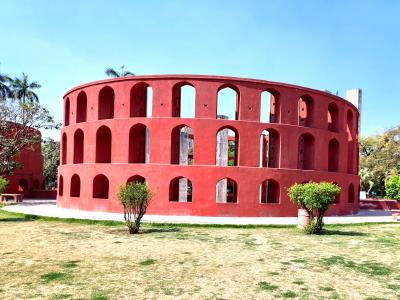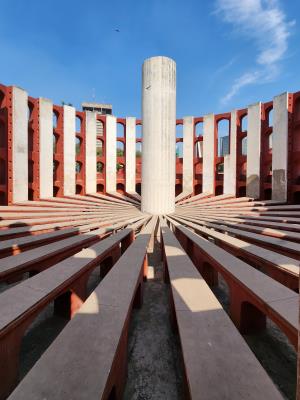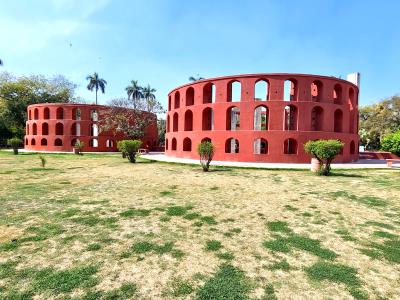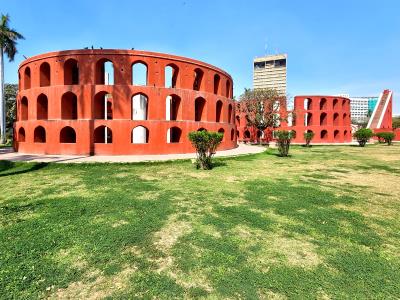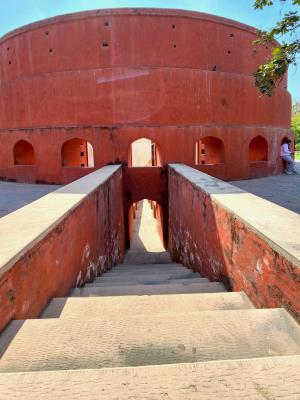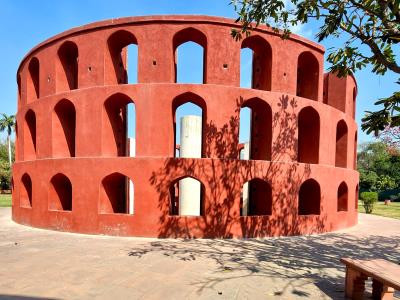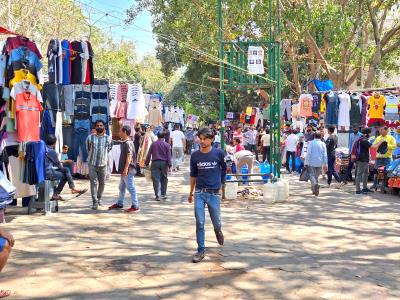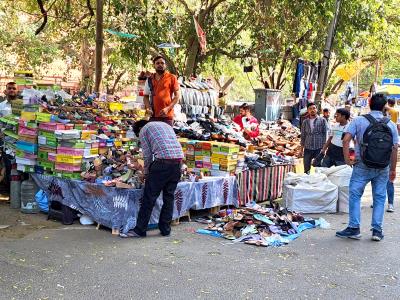Day 13 3/7/2023
India - Delhi
Frank's Trip
CLICK on any image to enlarge - use mouse cursor to move enlargement it if doesn't fit area
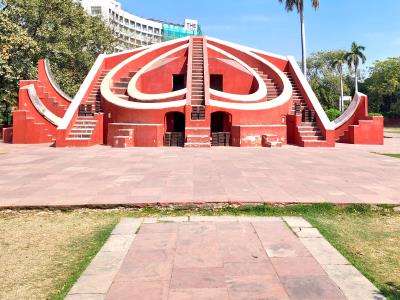
Close to the End...
The last couple of days are going to be very limited. I've loved all I've been able to see and do on this trip, but am worn out and tire so easily from the walking pneumonia. So, for these last couple days I'm trying to get out to a single thing each day that I can easily handle.
Next to the attraction was Janpath Lane. Shopping for shoes, fabrics, shirts, pants, dresses - all sorts of clothing.
This place is quite fascinating...
 Jantar Mantar
Jantar Mantar
The sister site to this one in Delhi is a World Heritage site - it is in Jaipur. There were five Jantar Mantars in India, all of them built at the command of the Maharaja Jai Singh, who had a keen interest in mathematics, architecture and astronomy. The 5 sites were in New Delhi, Jaipur, Ujjain, Mathura and Varanasi; they were completed between 1724 and 1735. The primary purpose of the observatory was to compile astronomical tables and to predict the times and movements of the sun, moon and planets.
A Jantar Mantar is an assembly of stone-built astronomical instruments, designed to be used with the naked eye.
Misra Yantra
The Misra Yantra was designed in order to determine the shortest as well the longest days of a year. It also indicates the exact moment of noon in different cities and locations regardless of the distance from Delhi.
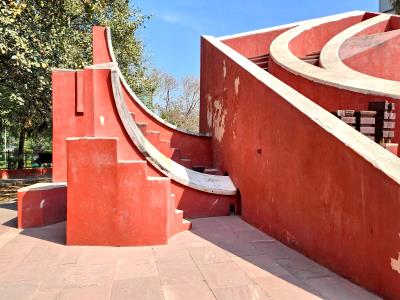

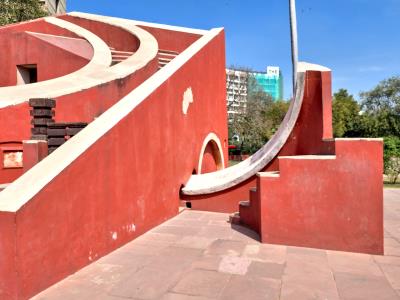
Samrat Yantra
The Samrat Yantra is a giant triangle (Sundial) which is 70 feet high, 114 feet long and 10 feet thick. It is a sundial meant to measure the exact time of the day with the accuracy of half a second. It was extremely precise. Part of the Samrat Yantra are the 2 semicircular quadrants to the sides.
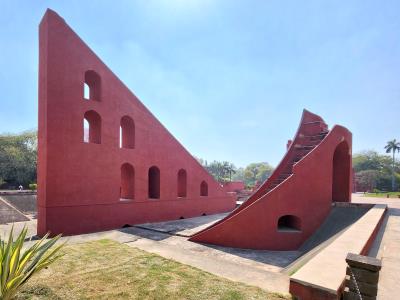
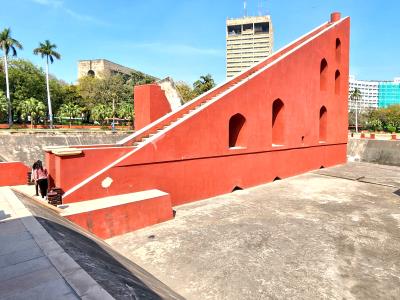
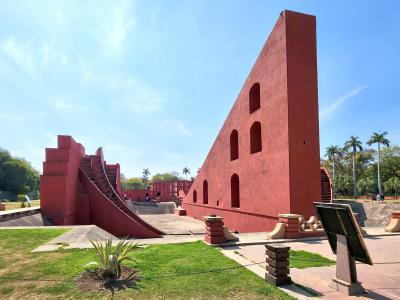
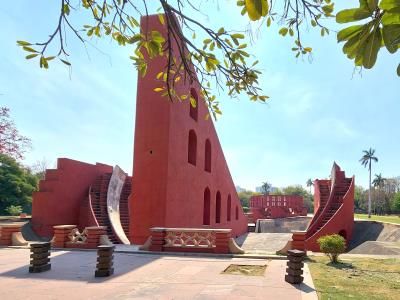
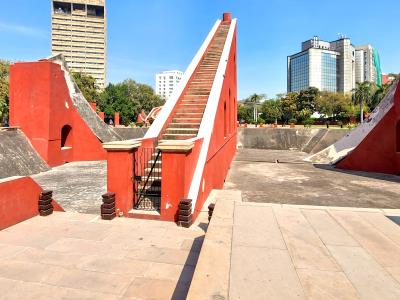
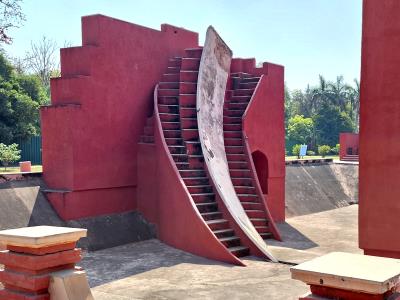
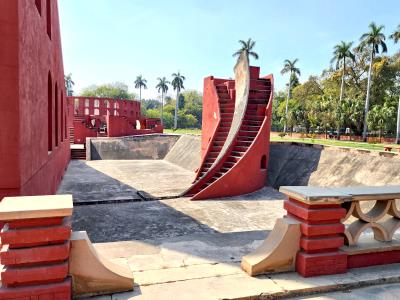
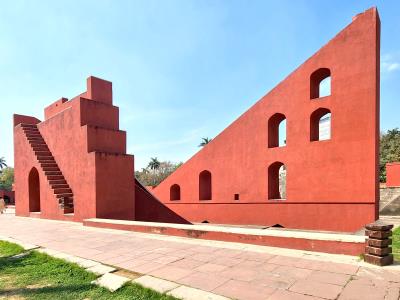
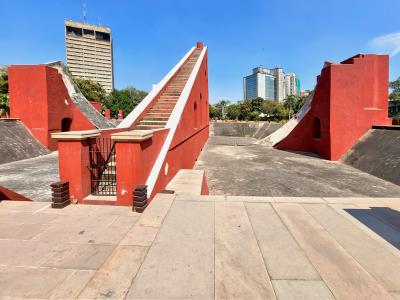
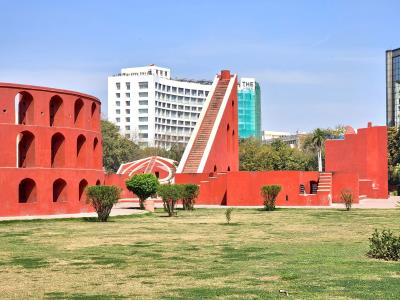
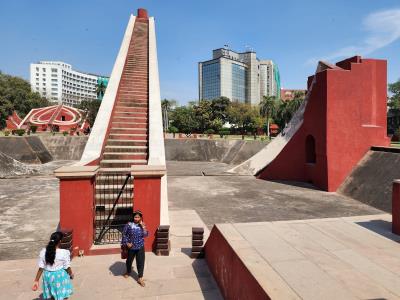
Jai Prakash Yantra
Jai Prakash Yantra at Jantar Mantar is used for observing the position of the sun, ascendants and other heavenly bodies. It acts as a double check on all the other instruments of the observatory. This instrument has been divided into two identical parts which work every hour alternately.
Since it was impossible to get a view of the top of these to really see what they are like, an image from JantarMantar.org has been used for that (to the right). There are several views from the sides of portions of the inner parts of these structures showing how the various surfaces were sculpted.
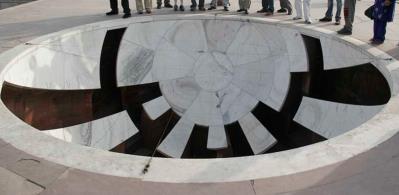
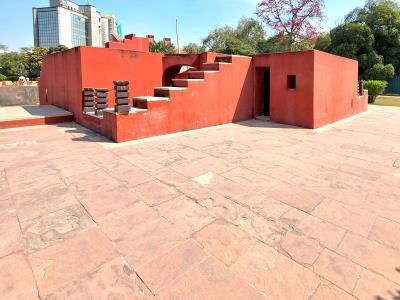
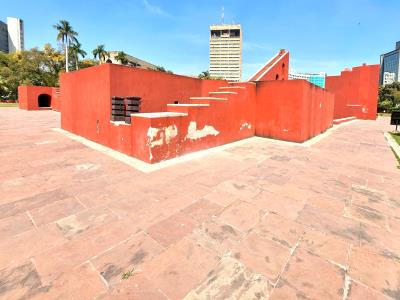
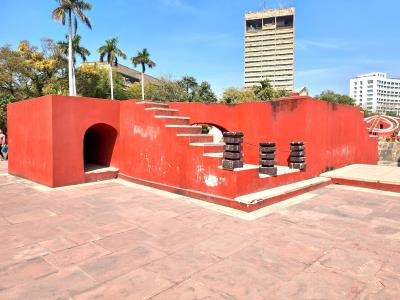
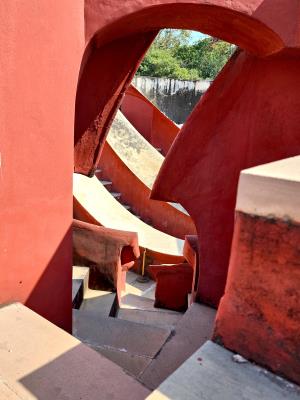
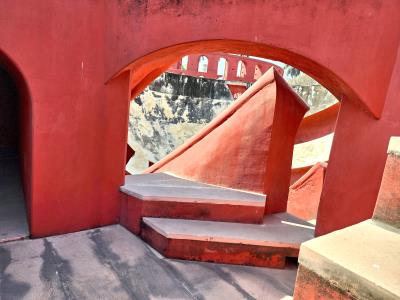
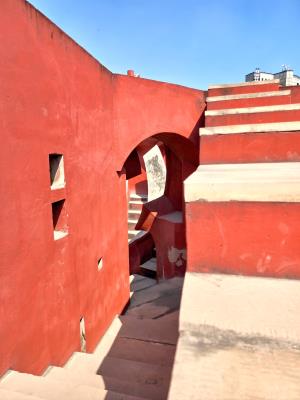
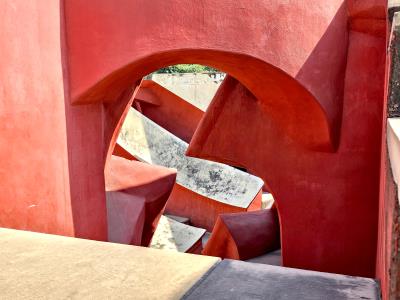
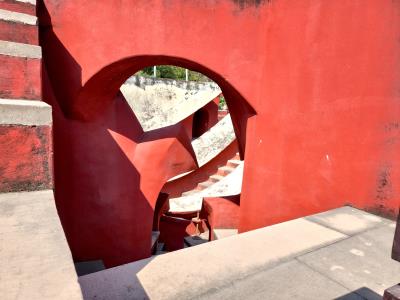
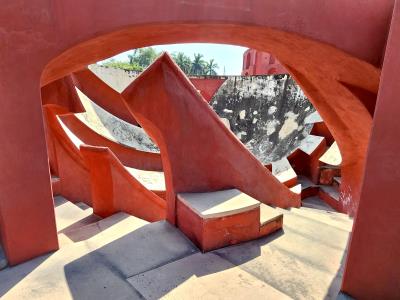
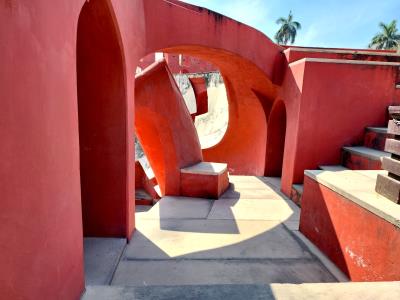
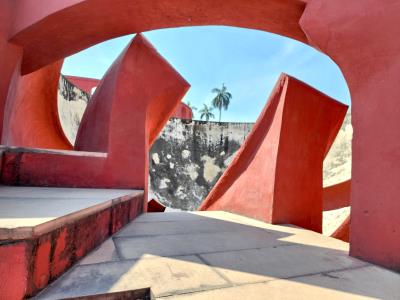
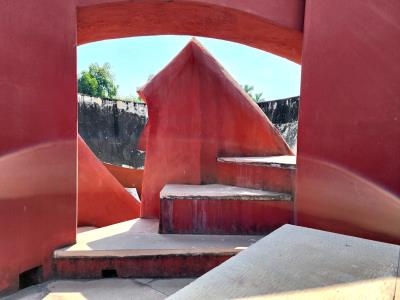
Ram Yantra
Ram Yantra is the device used for measuring the azimuth and altitude of stars. It is a cylindrical instrument, consisting of two large buildings open to the sky.
